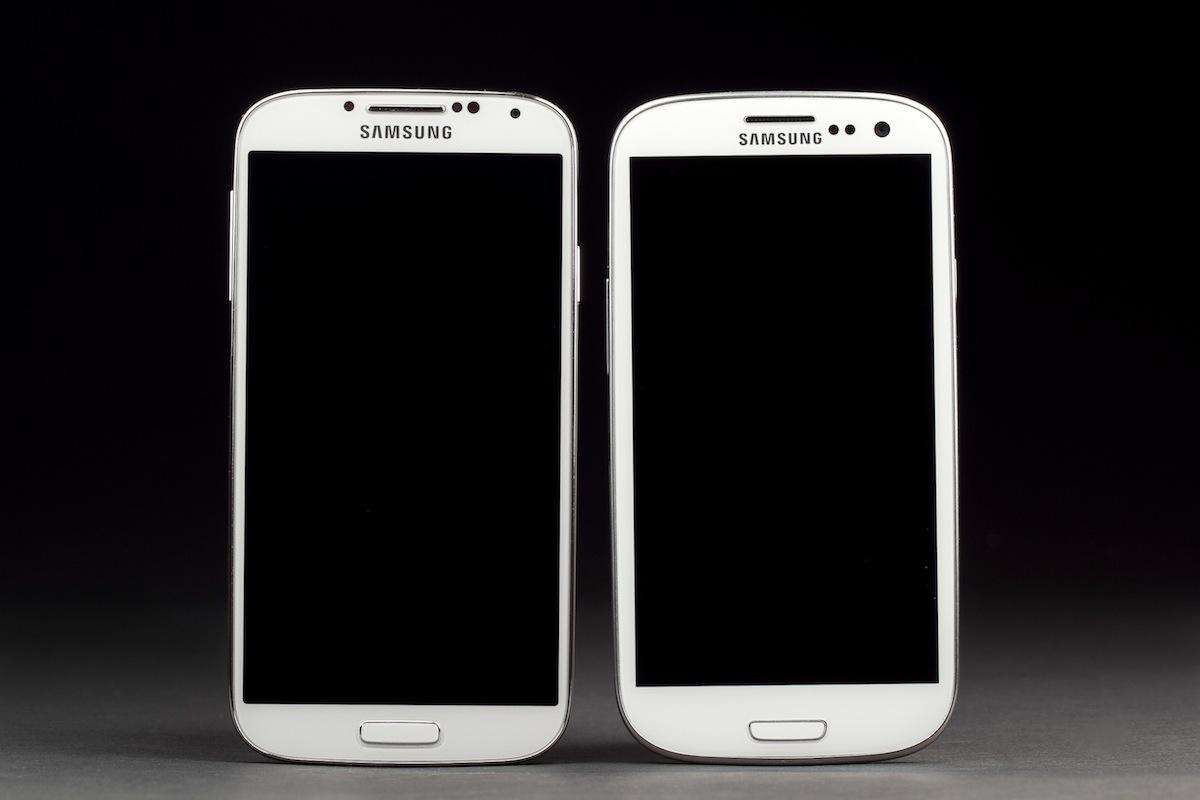There were a lot of things in 2013 that we liked. Malaysians finally got to enjoy super-fast 4G LTE, we saw amazing products such as the Google Glass, flagship smartphones were better than ever before…we even got the PlayStation 4 before its home country!
What about 2014? The year is but three days old, and with CES 2014 around the corner, already we have an inkling of things to come for the rest of the year. Naturally, we asked ourselves: what do we want to see in 2014? And more interestingly, what do we NOT want to see this year?
Check out our list after the jump!
Things We Want to See in 2014:
1) Better Performance from Local Telcos
Here’s something all local telcos are guilty of: uncompetitive smartphone postpaid plans. Plus, the plans are full of sneaky caveats too. Take a look at some of the plans on offer for some examples:
- Telco A offers one of the cheapest mobile Internet plans with bundled voice calls and SMS, but the actual allocated data is half as advertised – the other half of the Internet quota is reserved for “smart apps”: Facebook, Twitter and WhatsApp.
- Telco B offers “unlimited mobile Internet”, but high speed Internet quotas are set as low as 250MB
- Telco C offers a generous amount of data, but does not throttle Internet speeds once users hit them. Instead, users are disconnected from mobile Internet, and are required to purchase pricey “add on” Internet packages.
- Telco D has arguably the most competitive mobile Internet plans, but their “add on” packages are as expensive as RM10 for only 50MB of data.
This year, we really, really want to see local telcos put more effort into making their postpaid smarpthone plans more competitive, not to mention a lot more transparent.
Speaking of local telcos, we’d also like to see DiGi’s 4G LTE networks finally becoming a reality. Having been the first local telco to announce plans to upgrade its current infrastructure to support LTE networks, DiGi is still yet to roll out 4G LTE for smartphones – the only major telco to not do so. Even U Mobile has rolled out its 4G LTE networks before DiGi.
Some will point out that DiGi has already rolled out 4G LTE in parts of the country, but they’re only limited to its broadband and tablet plans. To date, there is still no hint on when the company plans to fully roll out its LTE for smaller device. Hopefully this will come soon, and before other telcos begin exploring plans for integrating LTE-Advanced for the country!
2) HTC and BlackBerry Restored to its Former Glory
Both companies have had a tough 2013…and some might argue that they were the victims of consequence. Consumers not used to gesture-based user interfaces shied away from BlackBerry 10, resulting in a spectacular lack of interest in BB10 flagship devices such as the Z10, Q10 and the Z30 – and a $1b loss in one quarter alone.
As for HTC, well, living under an all-encompassing Korean shadow is hard. Under the weight of Samsung’s colossal marketing budget, its flagship HTC One smartphone – which wasn’t a bad device at all – was crushed beneath Samsung Galaxy S4 ads. Adding insult to injury were the less-than-impressive HTC One mini and One max smartphones, two HTC One spinoffs that nobody quite cared for – resulting in the company’s first-ever quarterly net loss in the company’s history.
But these two companies, along with a certain fruity American company, helped pioneer the smartphone age. HTC developed the G1, the first Android smartphone. BlackBerry is still synonymous with security when it comes to mobile.
Here’s to both companies not only surviving 2014, but also restored to their former glory.
3) Better Battery Life on Smartphones
It’s the third day of the new year, but already we’re already hearing rumours of what the 2014 flagship smartphones might pack. 2K resolution displays, “true” octa-core chipsets…and even 4GB of RAM. But what about larger batteries? Or even better, software optimizations for better battery life?
These days it is not uncommon to hear of smartphones packing battery packs over 3000mAh, but that does not necessarily amount to spectacular battery life. During my review of the 3200mAh-toting Samsung Galaxy Note 3, I consistently ran out of juice after about 13-15 hours on a work day. It appears that when it comes to batteries, it’s not about the size, but what you do with it.
It is easy to pack 3000mAh or even 4000mAh batteries into a large smartphone, but perhaps it is more important to ensure there are software implementations in place to optimize battery life. With seemingly overkill specs on Android smartphones these days, shouldn’t companies now also pay attention to increasing battery life?
4) Sony to Pick Up Where it Left Off in 2013
Sony had a glorious year in 2013. Its mobile division produced some fine devices and in the Xperia Z1, the company had a flagship smartphone it can really be proud of. Its imaging team, too, had a year to remember: the new A7 and A7R had a world-first title that is quite a mouthful, but can be summed up in two words: groundbreaking and awesome. Let’s also not forget the QX10 and QX100, two “lens-style” cameras that connect to any Android or iOS device. And, there’s also the fact that Sony’s PS4 outsold the Xbox One virtually everywhere in the world where it is available…and it’s not even available in its home country yet!
We tip our hats off to you, Sony, for a spectacular 2013. And here’s to a an equally awesome 2014 (starting with the Xperia Z1f/Z1s/mini Z1 please!)
5) Wearables to Finally Take Off
Wearables were supposed to be the buzzword of 2013, but somehow it flattered to deceive. From the developer-only Google Glass to the Samsung Galaxy Gear, not a single wearable device proved to be compelling enough to be a mainstream consumer device.
That could change in 2014 though, as wearables move past their teething issues and truly become essential products. We’re likely to see the first wave of them next week, with companies such as LG, Samsung and even ZTE looking to launch a Bluetooth fitness tracking wristband.
And, let’s not forget Apple’s also due a smartwatch this year…
Things We Don’t Want to See in 2014:
1) Another series of smartphones that look exactly like the previous generation
Most smartphone users will be familiar with the joke that the only difference between the various Samsung phones is size. Well, they are not entirely wrong. The year 2013 was littered with a plethora of designs that we pretty much the same, and not just from the Koreans. Admittedly, there were minor improvements in terms of hardware across the board.
 (Image credit: geeky-gadgets.com)
(Image credit: geeky-gadgets.com)
Nokia and Apple have been trying new things with different materials and colours for phones released in late 2013. As much as we want to see companies like HTC and BlackBerry returning to their former glory, we would like to see them try new things to get there. It would not hurt the other to try new things to stay ahead of the game as well.
2) More breaches of privacy and security
Edward Snowden opened a can of worms by revealing the extent of America’s NSA spying program. At first there was the PRISM program that collected metadata on what is effectively the entire internet, then the bugging of German Chancellor Angela Merkel’s phone, and then accusations that the US government has installed backdoor programs that give it access to encrypted information stored on Google, Microsoft, and Apple servers. The scandal was so large it even revealed that Singapore was linked to a spying program on Malaysians.
Not only that, the number of security breaches which resulted in stolen user data was disturbing. Companies such as Adobe, Twitter (twice!), Evernote, Gmail, and even League of Legends developer, Riot Games. While most of the information was hashed, it displayed a severe weakness in the security of popular online services.
Fortunately, most of the companies were upfront and honest about the extent of the breaches. Users were warned that their information may have been compromised and asked to change their passwords. It would be nice to see more effort put into guarding the information we entrust these companies with.
3) Gesture controls on TVs and Smartphones
Microsoft’s Kinect sensor and Samsung’s Smart Gesture technology are technologically very advanced. Both are capable of recognising a wide range of gesture based commands; and, in the case of the Kinect, even recognise the user. However, gesture based controls have not taken off the way that these companies have hoped they would.
Waving your arms around to get something done requires a lot more movement than simply pressing a button. It is why remote controls on TVs were invented. The technology behind the controls also lacks the precision to make the experience completely seamless. This hasn’t stopped either company from trying its best to sell the feature as the next best thing.
Conversely, the Leap Motion controller is doing good things for gesture based controls on the PC front.
4) Phablets
This amalgamation of a tablet and smartphone is the logical progression of the consumer phone market. However, as smartphone sizes began to creep upwards so too did the size of phablets. The Samsung Galaxy Note III actually looks small (at 5.7-inches) compared to the colossal size of the competition. Sony’s Xperia Z Ultra comes in at a titanic 6.44-inches.
The issue here is that these devices are becoming too large to be used as a phone. It is impossible to use a phablet for calls without drawing some exceedingly strange looks. An ever increasing size is also problematic as there is not much further to do before phablets turn into full sized tablets. This is not helped by shrinking size of tablets.
5) Social media
In the year 2013, many Malaysian companies suffered from social media issues. Malindo Air and Paradigm Mall were only two of the companies that managed to damage their reputations. It only demonstrated that engaging people on the internet is a delicate task which must be undertaken with the utmost care. We do not enjoy reading about so called “social media experts” who manage to lose their cool when complaints come in.
On that note, it is possible that people are now sharing too much over social media these days. Keeping in touch with the occasional update about current activities is a great idea, but people enjoy posting about every minute of their lives opens up too much potential for identity theft and other problems. There is also the issue of other people not needing to know what you had for lunch.
What do you want and don’t want to see in tech this year? Share with us your thoughts in the comments section below!
This article was co-written with Farhan.
Follow us on Instagram, Facebook, Twitter or Telegram for more updates and breaking news.
























